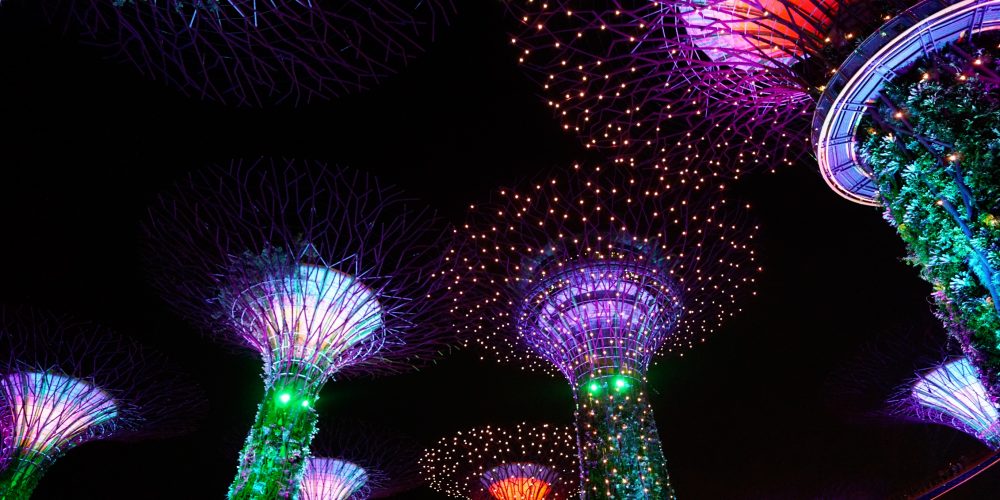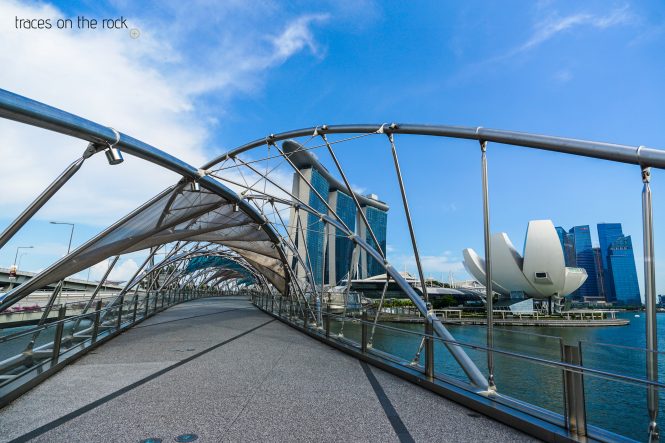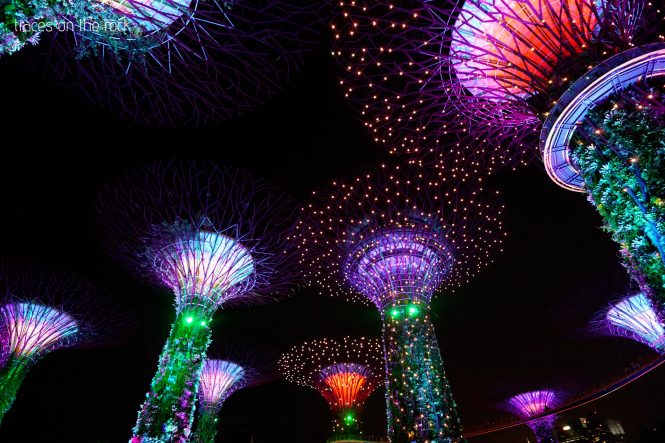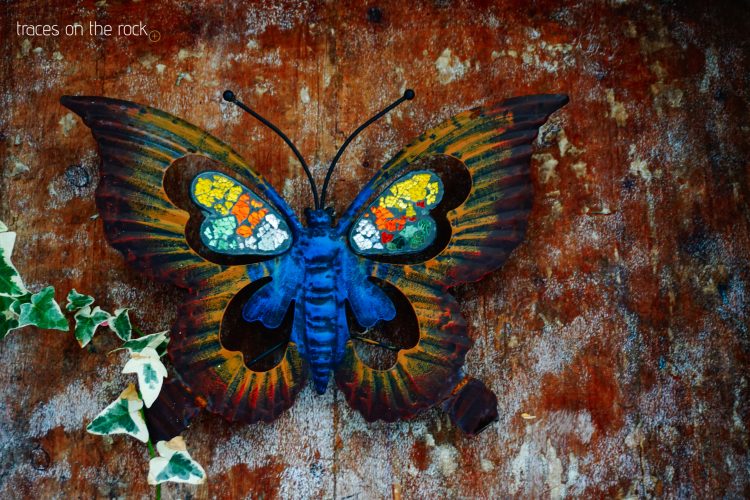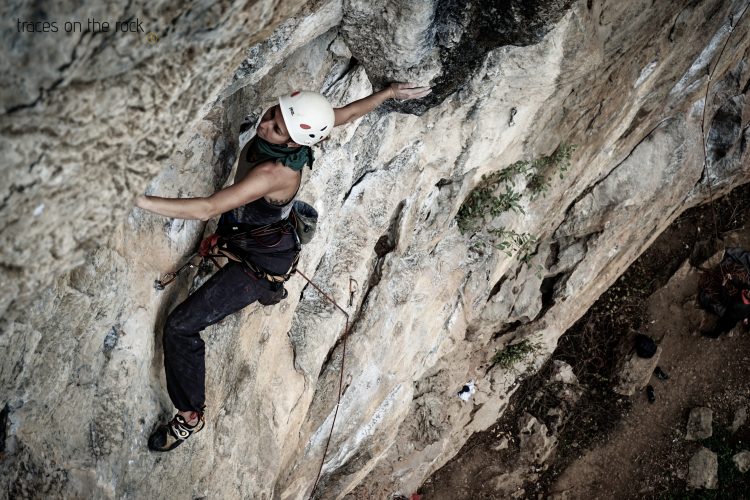A haven of security and capitalism – that’s the best way to describe Singapore. In the beginning of June I arrived at the modern city state. It was humid and hot. The modern architecture and the orderly bustle stood in stark contrast to the chaotic, homely and Hindu Bali. Singapore is multicultural, yet spirituality and religiosity are in the background. Once part of Malaysia, the population is predominantly made up of Chinese (around 70%), Malays and Indians. Since Sir Thomas Stamford Raffles founded the first British East India Company in 1819 on the sparsely populated island, the city has become a financial, business and transportation center. However, this was only possible through political and legal developments and criminal systems reminiscent of Orwell’s 1984. Nonetheless, it was a place of relaxation for me in terms of personal safety. Walking through Singapore at night, admiring the architecture and the breathtaking skyline without worrying about my own safety was one of the positive aspects of the city for me. More than ten million tourists visit Singapore every year. One of the main attractions is of course the futuristic and bold architecture. Marina Bay is home to the futuristic Marina Bay Sands and the ArtScience Center, the Esplanade Theater and Gardens by the Bay with its Flower Dome and Cloud Forest greenhouses. The Gardens by the Bay alone is built on 101 hectares of reclaimed land. Singapore had about 581 square kilometers of land in 1960. The city increased its land to 721 square kilometers in 2018. By 2030, the city plans to increase its land area by reclamation to around 766 square kilometers. In addition, the land use plan is to be more than just a garden city, but a city in the garden. The plan also intends to provide access to a park within a radius of 400 meters for 85% of the population. This trend is also increasingly visible in the architecture. The Green Revolution becomes visible in buildings with hanging gardens on the facades or small vegetable gardens and parks on the roofs. Step by step the concrete and steel desert of Singapore becomes a little green oase.
The botanical garden in the heart of the city, the political tranquility, the impressive numbers of wealth and the swarming universities of the country may sometimes give the impression of a Garden of Eden. It is not that idyllic. The success of Singapore is not based on a social and economic search process that is intrinsic to open and liberal systems. It is largely the result of authoritarian intentions that are closely related to the late founding father Lee Kuan Yew, whose visions are being pursued today by his son Lee Hsien Long. Manfred Rist, 2015, NZZ: Das Erfolgsrezept einer Nation ohne Wurzeln (translated into English by the author)
This authoritarian style is also the cause of the relatively conflict-free coexistence of the different cultures in Singapore. The state is rigorously pursuing violations of the law with draconian punishments. Therefor Singapore is often referred to as a “fine city“. Seemingly light offenses such as littering, chewing gum, eating and drinking in public transport, for failing to flush the toilet, being gay, being naked in your own home or committing suicide are prohibited by law and face fines or even imprisonment. Whether the punishments are enforced is another matter. Originally, Singapore’s legal system was based on the English common law system. Since 1993, the “Application of English Law Act” clarifies the use of the English common law within the Singaporean system. Nevertheless, this approach has success. Singapore is not only one of the cleanest cities in the world, but also one of the safest cities in the world. According to the Rule of Law Index of the World Justice Project’s , Singapore ranks 13th in 2017-2018 (2015 and 2016, 9th place.). However, the harmony in living together is not just due to it. The coexistence of different ethnic groups is even prescribed by the state. For example, so-called ethnic group quotas in Housing Development Housing (HDB) are designed to prevent ethnically-based discrimination and to ensure a mix-up. However, this peaceful coexistence is not self-evident when you look at the conflicts in Southeast Asia in the 60s and 70s. Many states had just freed themselves from their colonial ankle cuffs. The new freedom, however, sparked nationalist ideas, racial hatred and discrimination. In Vietnam, Laos and Cambodia, communist currents led to devastating conflicts and genocide, while in Indonesia and Malaysia, the Chinese population was persecuted.
In retrospect, the rapid economic development that has made Singapore one of the richest nations per capita must also be seen against the backdrop of those regional issues. Precisely because the other Southeast Asian states such as Malaysia, Indonesia, Thailand, the Philippines, Burma and Vietnam were unstable, corrupt, underdeveloped, communist and war-torn, the city-state was able to position itself as a safe haven. Manfred Rist, 2015, NZZ: Das Erfolgsrezept einer Nation ohne Wurzeln (translated into English by the author)
Instead, Singapore’s success is based on an autocratic system of government that has benefited from the conflicts of the surrounding nations. Today, views vary between admiration for the city state’s success and concern over social control and uninterrupted surveillance. After a week in Singapore I did not find it too difficult to leave. Too consumption-oriented, sterile and regulated. I felt well, but a little bored. There were no challenges similar to those I had experienced during the last few months traveling. I wanted to move on, so as not to spend more money in Singapore – a city of seduction. Just like a string of pearls, the shopping malls, museums and sports venues line up and compete for the favor of the visitors.
![]()

